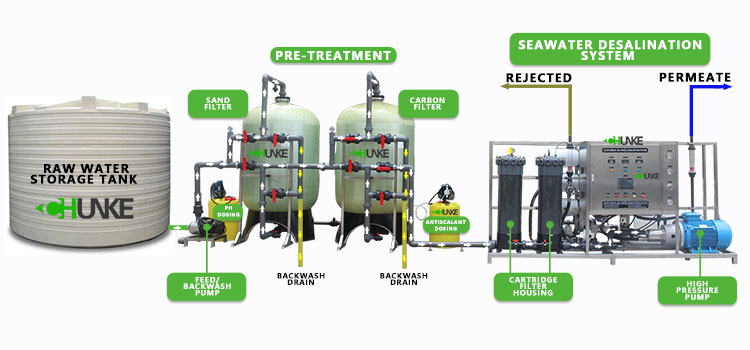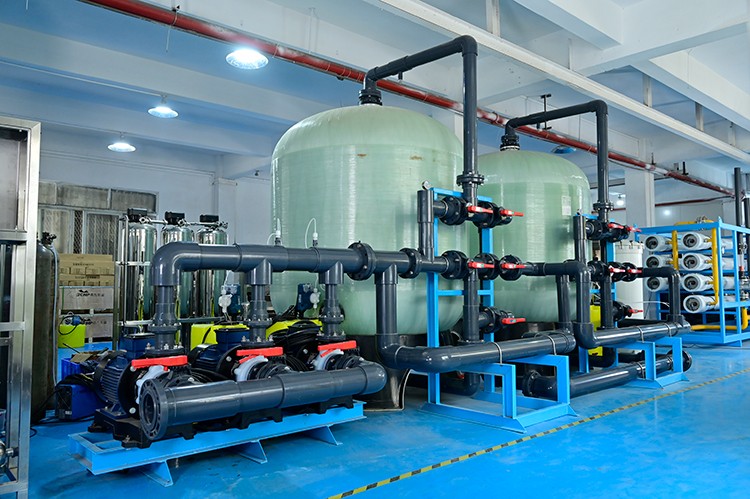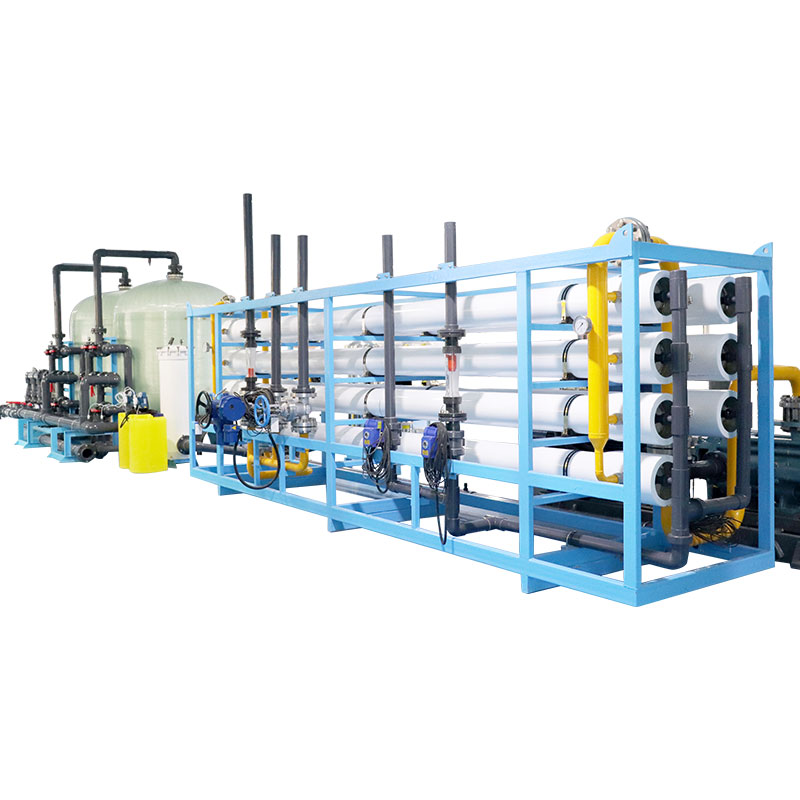What is the price of a complete desalination plant?
Desalination plants have been widely used in coastal cities, islands and industrial water supply in various countries. So, what is the price of a complete desalination plant? What are the factors affecting the price? This article will explore the cost structure, market price and influencing factors of desalination plants in depth.

Composition of desalination plants
A complete desalination plant usually consists of several main parts: water inlet pretreatment system, reverse osmosis (RO) system, energy recovery device, post-treatment system and control system.
1. Water inlet pretreatment system:
The water inlet pretreatment system is the first process of the desalination plant. Its main purpose is to remove large particles, suspended matter and organic matter in seawater to prevent these impurities from entering the core desalination system and causing damage to the equipment. The pretreatment system includes a coarse filter, a fine filter, an activated carbon filter and a dosing device.
2. Reverse osmosis (RO) system:
The reverse osmosis system is the core part of the desalination plant. It presses seawater into the reverse osmosis membrane through a high-pressure pump, removes salt and impurities by using the selective permeability of the membrane, and produces fresh water. Reverse osmosis membranes and high-pressure pumps are key components of the system.
3. Energy recovery device:
The energy recovery device can recover the high-pressure energy generated during the reverse osmosis process and convert it into electrical or mechanical energy, reducing the energy consumption of the entire system. This is particularly important for large-scale desalination projects and can significantly reduce operating costs.
4. Post-treatment system:
The post-treatment system further treats the fresh water to meet the water quality standards for specific purposes. Including adjusting the pH value, adding minerals and disinfection treatment to ensure that the produced water meets the standards for drinking water or industrial water.
5. Control system:
The control system is used to monitor and manage the operating status of the desalination device to ensure efficient operation of each link. Modern desalination devices are usually equipped with intelligent control systems that can realize automated operation and remote monitoring.

What factors affect the price of desalination devices?
The price of desalination devices varies depending on many factors, mainly including the following:
1. Water production capacity:
The water production capacity of the desalination device directly affects its price. The larger the water production, the larger the scale and complexity of the equipment, and the corresponding increase in cost. The price of a small household desalination unit ranges from a few thousand dollars to tens of thousands of dollars, while a large industrial or municipal desalination unit can cost millions of dollars.
2. Technology Type:
There are several main types of desalination technologies, including reverse osmosis (RO), multiple effect distillation (MED), and vapor compression (VC). Reverse osmosis technology is the most widely used due to its high efficiency and relatively low energy consumption, and the equipment cost is relatively low. Multiple effect distillation and vapor compression technologies are suitable for large industrial projects, but the equipment cost and energy consumption are high.
3. Equipment Material:
Seawater is highly corrosive, and the key components of the desalination unit need to use corrosion-resistant materials such as stainless steel, titanium alloy, and high-grade plastics. The choice of these materials directly affects the cost of the equipment.
4. Energy Recovery System:
The configuration of the energy recovery system has an important impact on the price of the desalination unit. An efficient energy recovery system can significantly reduce energy consumption, but its initial investment is large. For large-scale desalination projects that operate for a long time, the investment in the energy recovery system is worthwhile.
5. Engineering design and installation:
The design and installation of desalination plants need to take into account the specific geographical location, seawater conditions and water demand. Engineering design and installation costs include infrastructure construction, pipeline connections, power supply and equipment commissioning, all of which will affect the total cost.
Price analysis of desalination plants of different sizes
Small household desalination plants:
Small household desalination plants are suitable for households on remote islands or coastal areas, and the water production capacity is usually 100 to 500 liters per hour. Such plants are relatively affordable, generally between US$2,000 and US$10,000, depending on the brand, configuration and water production capacity of the equipment.
Medium-sized commercial desalination plants:
Medium-sized commercial desalination plants are suitable for hotels, resorts and small industrial enterprises, and the water production capacity is usually 500 to 5,000 liters per hour. The price of such plants ranges from US$50,000 to US$200,000, depending on the type of technology, energy recovery system configuration and installation cost of the equipment.
Large-scale industrial and municipal desalination plants:
Large-scale industrial and municipal desalination plants can produce tens to hundreds of thousands of liters per hour and are mainly used in urban water supply, offshore drilling platforms and large industrial enterprises. The price of such plants ranges from several million to tens of millions of dollars, depending on the scale of the equipment, the type of technology, the energy recovery system and the complexity of the installation project.

Economic Benefits and Social Impact of Desalination Plants
1. Economic Benefits:
Although the initial investment of desalination plants is high, in the long run, by providing a stable supply of fresh water, it can significantly reduce the cost of water use, especially in areas with scarce water resources. The application of energy recovery systems further reduces operating costs and improves economic benefits.
2. Social Impact:
The application of desalination technology helps to alleviate the global shortage of fresh water resources, ensure the safety of residents' water use and improve the quality of life. In addition, desalination plants play an important role in responding to natural disasters and providing emergency water supply, which has a positive significance for social stability.
3. Environmental Protection:
Modern desalination plants focus on reducing the impact on the environment during design and operation. By adopting energy-saving technologies and efficient energy recovery systems, carbon emissions and energy consumption are reduced. In addition, the concentrated brine and other wastes generated during the desalination process are also scientifically treated to reduce pollution to the marine ecological environment.
Conclusion
The price of a complete desalination plant varies depending on many factors, ranging from a small household device of a few thousand dollars to large industrial and municipal equipment of tens of millions of dollars. Despite the high initial investment, the desalination plant significantly reduces water costs and improves economic benefits in the long run by providing a stable supply of fresh water.






